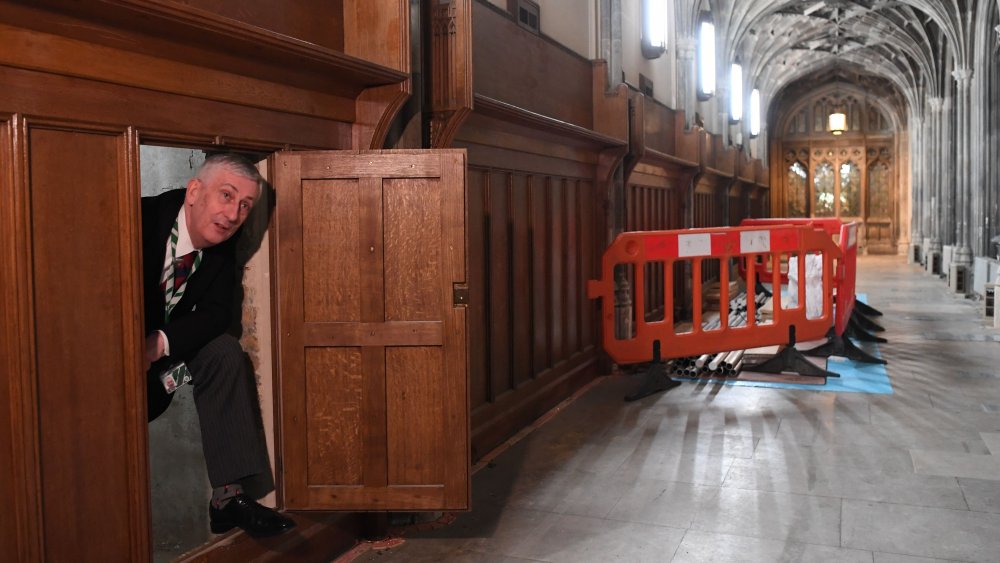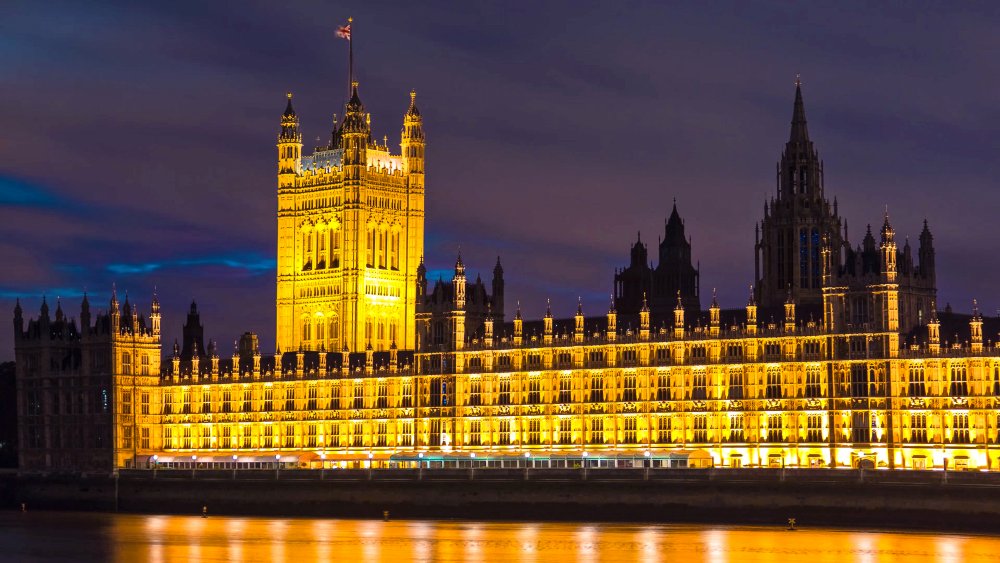Secret 17th-Century Corridor Discovered In British House Of Commons
Having a dream wherein one discovered a hidden or previously unnoticed room in their own house is a common trope often associated with the discovery of unexplored aspects of your own personality. However, for historians working on Great Britain's House of Commons, finding secret rooms is just another day on the job. In February 2020, the British Parliament released an official report detailing the discovery of a secret 17th-century corridor that was thought to have been sealed off and filled in during World War II.
In the article detailing their findings, historian Liz Hallam Smith said the discovery came about after digging through thousands of uncatalogued documents, where they found a plan for the doorway. Everyone had missed it, despite the fact that it was hiding in plain sight as a normal looking section of paneling. "As we looked at the paneling closely, we realised there was a tiny brass key-hole that no-one had really noticed before, believing it might just be an electricity cupboard."
A key to the lock was commissioned, and when the paneling was opened they gained access to a part of the building that hadn't been used in nearly a century.
The origins of the House of Commons' secret passage
After its rediscovery, historians determined that the passage had been built in preparation for King Charles II's 1661 coronation banquet. They compared historic documents with samples taken from the wooden ceiling beams in the corridor, which they dated using dendrochronology — or tree ring dating — to confirm that the trees had been felled in 1659, matching the theorized construction timeline. Evidence suggests that the passageway had been used many times since. They even found graffiti left by bricklayers who had worked on the corridor in 1851: "This room was enclosed by Tom Porter who was very fond of Ould Ale."
Although the passage was thought to have been impenetrable since World War II, historians did make one startlingly contemporary discovery when they went in. A light switch had been installed at some point (likely during a restoration in the 1950s), and when flipped a bulb etched with the inscription "HM Government Property" flickered on.

